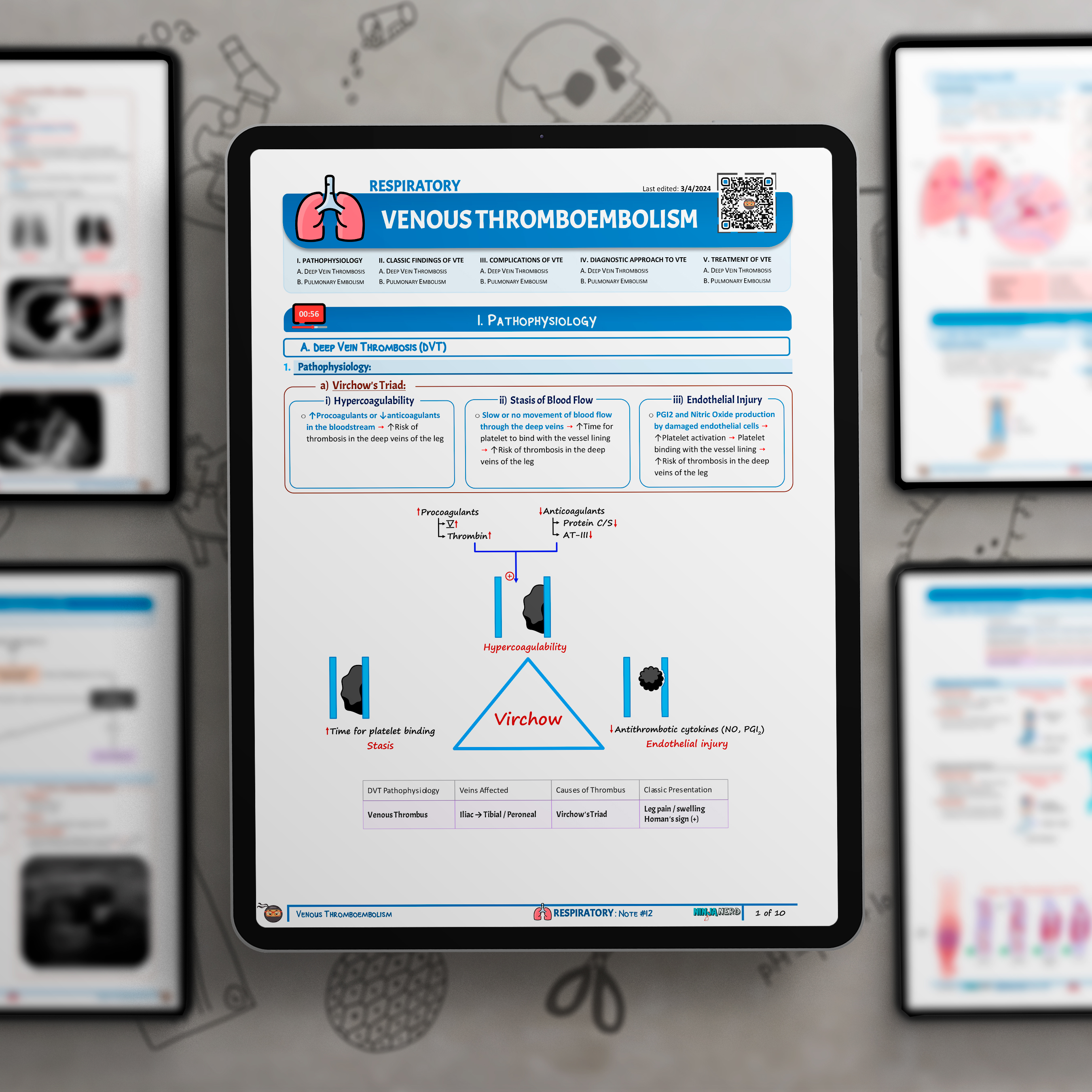Please help support Ninja Nerd to continue creating free medical videos. All donations we receive are put directly into content creation so we are able to continue providing these videos for free. Thanks!


Sorry, but there is currently no illustration available for this video.
Check back again soon, or contact us to find out when they will be available.
Ninja Nerds!
Professor Zach Murphy will present on Venous Thromboembolism, including Pulmonary Embolism (PE) and Deep Vein Thrombosis (DVT). We will be going into detail on the following main objectives:
1. Definition and Classification of Venous Thromboembolism
- Acquire an in-depth understanding of Venous Thromboembolism, a condition involving the formation of blood clots in the venous system.
- Explore the two main types of VTE: Deep Vein Thrombosis (DVT) and Pulmonary Embolism (PE).
2. Pathophysiology and Etiologies
- Uncover the underlying mechanisms leading to VTE, focusing on the triad of stasis, hypercoagulability, and endothelial injury.
- Investigate common risk factors such as surgery, malignancy, immobility, and inherited clotting disorders.
3. Clinical Manifestations and Presentation
- Identify key signs and symptoms for DVT, including leg swelling, pain, and erythema, and for PE, such as dyspnea, chest pain, and hemoptysis.
- Recognize how to differentiate between DVT and PE based on clinical presentation and risk factors.
4. Diagnostic Criteria and Tools
- Familiarize yourself with the diagnostic modalities available, such as ultrasound for DVT and CT pulmonary angiography for PE.
- Learn about risk stratification tools like the Wells Criteria and the Pulmonary Embolism Rule-out Criteria (PERC).
5. Initial Management Strategies
- Understand evidence-based approaches for immediate management, including anticoagulation therapy and supportive care.
- Explore the indications for pharmacologic thrombolysis and mechanical thrombectomy.
6. Definitive Management Approaches
- Examine long-term treatment options, such as vitamin K antagonists and direct oral anticoagulants (DOACs).
- Evaluate the criteria for treatment duration and the role of inferior vena cava (IVC) filters.
7. Complications and Prognosis
- Discuss potential complications like post-thrombotic syndrome, chronic thromboembolic pulmonary hypertension, and recurrent VTE events.
- Consider prognostic factors, including the presence of comorbid conditions, the extent of clot burden, and response to initial treatment.
Table of Contents:
0:00 Lab
0:07 Venous Thromboembolism Introduction
0:14 Pathophysiology of DVT
5:01 Issues with DVT
6:03 Diagnostic Approach to DVT
9:09 Treatment of DVT
10:34 Pathophysiology of Pulmonary Embolism
11:59 Issues with Pulmonary Embolism
14:23 Diagnostic Approach to Pulmonary Embolism
20:39 Treatment of Pulmonary Embolism
23:24 Comment, Like, SUBSCRIBE!